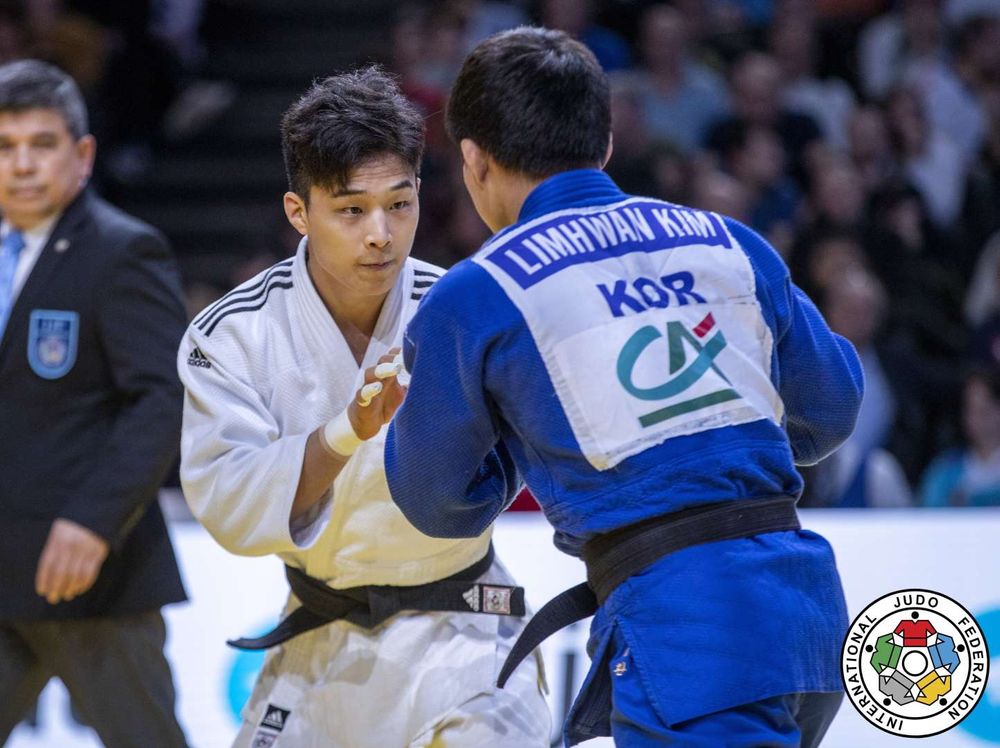In Lesson 1, I talked about stances (Ai-Yotsu & Kenka-Yotsu) and why most fights end up being Kenka-Yotsu despite the fact that 90% of people are naturally right handed. You would think that that being the case, most fights would end up in Ai-Yotsu (Right vs Right).
The main reason, as I articulated in Lesson 1 is that usually the dominant gripper will subjugate the weaker one and force him into an opposite stance.
Let's say there's Player A (dominant) and Player B (weaker). Both are right-handers, so both would start off going for a right-handed grip. Very quickly, Player A will establish his grip and Player B, feeling uncomfortable about an Ai-Yotsu situation, submits to Player A's gripping and settles into a left-handed grip.
This is a terrible thing to do for the obvious reason that Player B is not a left-hander! Unless Player B has been secretly developing some left-handed throws, he won't be able to do his normal judo. By submitting to Player A's dominant grip, Player B has put himself in a very vulnerable position.
Whenever you are facing a dominant grip-fighter like Player A, there are three options you can choose from:
- Submit to Player A and adopt a left-handed grip
- Refuse to submit and go for a Right vs Right (Ai-Yotsu) gripping situation. American judokas like to call this a 50:50 situation because neither player is dominant.
- Fight to gain dominance over Player A and force him to adopt a left-handed grip instead.
Of the three options above, (1) is the absolute worst thing you can do. Never allow yourself to be forced into a weak stance.
Option (2) is not a great situation to be in but it's not a terrible one either. This situation is the reason why it's important to develop some Ai-Yotsu throws. Let's say you like Kouchi-Gari and your favorite version is Skipping Kouchi-Gari, which can only be done in a Kenka-Yotsu situation. What happens if you were to suddenly find yourself in a tight Ai-Yotsu situation. Your Skipping Kouchi-Gari suddenly won't work anymore. The angles and grips are all wrong. What you should do instead is Kouchi-Gake, which is designed to make Kouchi work in an Ai-Yotsu situation.
Realize that for every throw, there are usually a lot of Kenka-Yotsu versions and some Ai-Yotsu versions. Because most fights end up in a Kenka-Yotsu situation, it makes sense to focus on the Kenka-Yotsu versions. But it's a good idea to learn at least one Ai-Yotsu version, just in case/
Option (3) is the toughest and most tiring approach but it's also the best. If Player A is right-handed and very strong, he won't easily submit to you. In fact, he will try to dominate you. And so, it becomes a fierce battle of grips. If you are strong enough and skilled enough to impose your right-handed grip on Player A, he will most likely either submit to your grips and go lefty; or he will refuse to settle and you guys will end up with Option (2), which is an Ai-Yotsu situation.
To recap, you have three options:
(1) horrible idea
(2) neutral (or 50:50)
(3) good
So, when coming to grips with your opponent, always aim for (3). If you can't get (3), settle for (2) but never go for (1) unless your left stance is not really a weak stance for you.
In a future lesson, I will tackle the topic of whether it's a good idea to try to learn how to do every technique on both sides. That means if you are learning seoi-nage, you learn to do it both to the left and to the right. If you're learning uchimata, you also do it on both sides, and so on.
On paper this sounds like a great idea. In practice, it's not such a great idea after all. I'll explain why in a future lesson but up next in Lesson 3, I will talk about what you should do if you are right-handed and you go up against a player who is left-handed.

